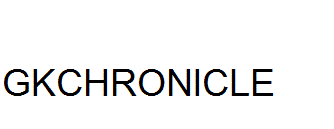Indian Polity / Directive Principles



|

|
In the Indian Constitution, the conflict between Fundamental Rights and Directive Principles of State Policy (DPSP) emphasizes a striking balance between individual freedom and community welfare. The fundamental rights, which protect the individual liberties, are justiciable in nature whereas DPSPs, which promote the socio-economic and political welfare of the society, are not justiciable. That is, one cannot move to the courts for the non-implementation of DPSPs. Upto 1967, the Supreme Court was maintaining the stand that the Parliament can amend any part of the Constitution including the PART containing the fundamental rights.
In the 1951 Champakam Dorairajan Case, the Supreme Court ruled that, in the event of a conflict between the fundamental rights and the DPSPs, the former would take precedence, upholding the idea that personal freedoms come first while balancing the larger societal goals.
Directive Principles must be consistent with and operate in agreement with fundamental rights while functioning as subsidiary to the fundamental rights. It also maintained that the Parliament could amend the fundamental rights through Constitutional Amendment Acts.
In 1967, in Golaknath vs the State of Punjab case, Supreme Court declared that the Parliament cannot amend fundamental rights in order to implement the directive principles.
It was in conflict with the Supreme Court's own ruling in the 'Shankari Prasad Singh Deo vs Union of India' case of 1951. The first most important case to address the extent of Parliament's amending power was the 'Shankari Prasad Singh Deo' case. In this case, the Supreme Court supported the validity of the First Constitutional Amendment by the Parliament saying that any part of the Constitution could be amended by the Parliament including the Fundamental Rights.
In 1971, Parliament approved 24th and 25th Constitutional Amendments in order to overpower the limitation imposed by the Supreme Court in Golaknath case. 24th Amendment says that Parliament can also amend fundamental rights. By 25th Amendment, Article 31C was added.
Article 31C says that if any law is made to give effect or implement the policy in the directive principles, if such
law restricts the fundamental rights, that law cannot be declared as invalid on the reason of violation of the fundamental rights.
Moreover, such laws should not be challenged in any court of law under the grounds of unconstitutional nature. This is nothing but the
imposition of limitations on judicial review of Supreme Court and High Courts.
In 1973, in Keshavanda Bharathi case, these 24th and 25th Constitutional Amendments were challenged in the Supreme Court.
Supreme Court supported the
24th and 25th Constitutional Amendments to the maximum extent and held that Parliament of India can amend any part of the Constitution including the PART
having the fundamental rights. However, it can not disturb the 'basic structure' of the Constitution.
Judicial Review comes under basic structure of the constitution. That part of the 25th Amendment (restricting Judicial Review) was declared invalid.
The Supreme Court invented Doctrine of Basic Structure of the Constitution in Keshavananda Bharthi case. Supreme Court, in Keshavananda
Bharathi case, also employed doctrine of prospective overruling.
Prospective overruling means Supreme Court may or may not
follow the earlier judgments in subsequent cases.
In 1976, by the 42nd Constitutional Amendment Act, the Parliament had significantly extended the scope of the Article 31C. This Amendment granted Primacy to not just the Articles 39B and 39C but to all the Directive Principles over the Fundamental Rights placed under Articles 14, 19 and 31.
42nd Amendment was challenged in Mineral Mills case in 1980. Supreme Court upheld the judgement of Keshavananda Bharathi case and
declared that any Amendment restricting the judicial review of Supreme court is unconstitutional and invalid.
It also held that if
any laws are made to implement the Directive Principles under Articles 39B and 39C, they are valid even though they are violating
fundamental rights enshrined in Articles 14, 19 and 31.
Now, only Articles 39B and 39C have Primacy over fundamental rights but not the other directive principles. As a result, the Supreme Court restricted the scope of Article 31C and it will have the same effect prior to 1976. So, 42nd Amendment was got struck down.
In Mineral Mills case, Supreme Court defined and listed the scope of basic structure. They are parliamentary democracy, Indian federal system, Republican nature, Secularism, rule of law, judicial review, universal adult franchise, the essence (spirit) of fundamental rights. In precise, there must be a fine balance between fundamental rights and directive principles.